- Home
- Peter Ackroyd
London Page 2
London Read online
Page 2
1176 The building of a stone bridge
1191 The establishment of a London commune
1193–1212 The first mayor of London, Henry Fitz-Ailwin
1220 Rebuilding of Westminster Abbey
1290 Expulsion of the Jews; Eleanor Crosses set up at Chepe and Charing Cross
1326 The London revolution: deposition of Edward II
1348 The Black Death kills one-third of London’s population
1371 Charterhouse founded
1373 Chaucer living above Aldgate
1381 Wat Tyler’s revolt
1397 Richard Whittington first elected mayor
1406 Plague in London
1414 The Lollard revolt
1442 The Strand is paved
1450 Jack Cade’s revolt
1476 The establishment of Caxton’s printing press
1484 The sweating sickness in London
1485 Henry VII enters London in triumph after the Battle of Bosworth
1509 Henry VIII ascends the throne
1535 Execution of Thomas More on Tower Hill
1535–9 The spoilation of London’s monasteries and churches
1544 Wyngaerde’s great panorama of London
1576 The building of the Theatre in Shoreditch
1598 Publication of Stow’s Survey of London
1608–13 The construction of the New River
1619–22 The building of Inigo Jones’s Banqueting House
1642–3 The construction of earthen walls, and forts, against the king’s army
1649 Execution of Charles I
1652 The emergence of the coffee house
1663 The building of a theatre in Drury Lane
1665 The Great Plague
1666 The Great Fire
1694 The foundation of the Bank of England
1733 The covering of the Fleet River
1750 The building of Westminster Bridge
1756 The construction of the New Road
1769 The building of Blackfriars Bridge
1769–70 Wilkite agitation in London
1774 The London Building Act
1780 The Gordon Riots
1799 The establishment of the West India Dock Company
1800 The foundation of the Royal College of Surgeons
1801 London’s population reaches one million
1809 Gas-lighting instituted in Pall Mall
1816 Radicals meet at Spa Fields: riots in Spitalfields
1824 National Gallery founded
1825 Nash rebuilds Buckingham Palace
1829 London Metropolitan Police Force founded
1834 Houses of Parliament destroyed by fire
1836 University of London established
1851 The Great Exhibition opened in Hyde Park
1858 The “great stink” leads to Bazalgette’s sanitary engineering
1863 The opening of the world’s first underground railway
1878 The advent of electric lighting
1882 The emergence of the electric tram-car
1887 “Bloody Sunday” demonstrations in Trafalgar Square
1888 The appearance of Jack the Ripper in Whitechapel
1889 The establishment of the London County Council
1892 The beginning of the Blackwall Tunnel under the Thames
1897 The emergence of the motor-omnibus
1901 Population of London reaches 6.6 million
1905 Epidemic of typhus. Aldwych and Kingsway opened to traffic
1906 Suffragettes demonstrate in Parliament Square
1909 The opening of Selfridge’s department store
1911 The siege of Sidney Street
1913 The inauguration of the Chelsea Flower Show
1915 The first bombs fall on London
1926 The General Strike
1932 The building of Broadcasting House in Portland Place for the BBC
1935 The inauguration of the Green Belt
1936 The battle of Cable Street
1940 The beginning of the London Blitz
1951 The Festival of Britain on the South Bank
1952 The great smog
1955 The opening of Heathrow Airport
1965 The abolition of the London County Council; creation of the Greater London Council
1967 The closure of the East India Dock; the building of Centre Point
1981 The Brixton riots; the establishment of the London Docklands Development Corporation
1985 Broadwater Farm riots
1986 Completion of M25 ringway; abolition of GLC; the “big bang” in the Stock Exchange
1987 The building of Canary Wharf
2000 Mayoral elections
Acknowledgements
The author and publisher are grateful to the following for permission to reproduce illustrative material which appears in the text pages: Bibliothèque Nationale, Paris, 587; British Library, 43; Folger Shakespeare Library, Washington, D.C., 81; Guildhall, 383, 455, 471, 529, 751; Imperial War Museum, 721; Magdalene College, Cambridge, 191; Museum of London, 5, 89, 121, 135, 219, 237, 297, 403, 551, 613, 661, 735.
The author and publisher are grateful to the following for permission to reproduce copyright material: Italo Calvino, Invisible Cities (Secker & Warburg and the Wylie Agency (UK) Ltd.); Sally Holloway, Courage High (HMSO); Mike and Trevor Phillips, Windrush: the Irresistible Rise of Multi-Racial Britain (HarperCollins); Virginia Woolf, The Diaries, ed. Anne Oliver Bell (the Executors of the Estate of Virginia Woolf, The Hogarth Press and Harcourt Brace).
The jacket and endpapers show details from the following paintings and photographs:
Front cover: London from Southwark, c.1630, British School; The Great Wheel, Earl’s Court Exhibition, 1890, by Charles Wilson; Curds and Whey Seller, Cheapside, c.1730, British School; Coombe and Co’s Brewer’s, St. Giles, c.1875, by Alfred and John Bool © Museum of London; Canary Wharf from the Isle of Dogs; Thames Barrier © Matthew Weinreb; inside flap: The Crawlers, c.1876, by John Thomson © Museum of London; Lloyds of London © Matthew Weinreb; back cover: May Morning, c.1760, by John Collet; Allen’s Tobacconist Shop, c.1841, by Robert Allen; A Shop in Macclesfield Street, Soho, 1883, by Henry Dixon; Suffragette Demonstration in Trafalgar Square, c.1908, © Museum of London; Simpson’s of Piccadilly; John Lewis, Oxford Street © Matthew Weinreb; inside flap: Westminster Bridge from the River Looking South, c.1750, British School; Railway Maintenance Gang, St. Pancras, c.1900, by Rev. John Galt © Museum of London; spine: Regent Street, c.1886, anon. © Museum of London; endpapers: Seven Phases in the Evolution of Old London Bridge © Museum of London.
Cartography on pages xxvi–xxix by Pamela Talese.
While the publishers have made every effort to trace the owners of copyright, they will be happy to rectify any errors or omissions in further editions.
The City as Body
The image of London as a human body is striking and singular; we may trace it from the pictorial emblems of the City of God, the mystical body in which Jesus Christ represents its head and the citizens its other members. London has also been envisaged in the form of a young man with his arms outstretched in a gesture of liberation; the figure is taken from a Roman bronze but it embodies the energy and exultation of a city continually expanding in great waves of progress and of confidence. Here might be found the “heart of London beating warm.”
The byways of the city resemble thin veins and its parks are like lungs. In the mist and rain of an urban autumn, the shining stones and cobbles of the older thoroughfares look as if they are bleeding. When William Harvey, practising as a surgeon in St. Bartholomew’s Hospital, walked through the streets he noticed that the hoses of the fire engines spouted water like blood from a cut artery. Metaphorical images of the Cockney body have circulated for many hundreds of years: “gob” was first recorded in 1550, “paws” in 1590, “mug” in 1708 and “kisser” in the mid-eighteenth century.
Harvey’s seventeenth-century hospital was beside the shambles of Smithfield, and that conjunction may
suggest another image of the city. It is fleshy and voracious, grown fat upon its appetite for people and for food, for goods and for drink; it consumes and it excretes, maintained within a continual state of greed and desire.
For Daniel Defoe, London was a great body which “circulates all, exports all, and at last pays for all.” That is why it has commonly been portrayed in monstrous form, a swollen and dropsical giant which kills more than it breeds. Its head is too large, out of proportion to the other members; its face and hands have also grown monstrous, irregular and “out of all Shape.” It is a “spleen” or a great “wen.” A body racked with fever, and choked by ashes, it proceeds from plague to fire.
Whether we consider London as a young man refreshed and risen from sleep, therefore, or whether we lament its condition as a deformed giant, we must regard it as a human shape with its own laws of life and growth.
Here, then, is its biography.
Some will object that such a biography can form no part of a true history. I admit the fault and plead in my defence that I have subdued the style of my enquiry to the nature of the subject. London is a labyrinth, half of stone and half of flesh. It cannot be conceived in its entirety but can be experienced only as a wilderness of alleys and passages, courts and thoroughfares, in which even the most experienced citizen may lose the way; it is curious, too, that this labyrinth is in a continual state of change and expansion.
The biography of London also defies chronology. Contemporary theorists have suggested that linear time is itself a figment of the human imagination, but London has already anticipated their conclusions. There are many different forms of time in the city, and it would be foolish of me to change its character for the sake of creating a conventional narrative. That is why this book moves quixotically through time, itself forming a labyrinth. If the history of London poverty is beside a history of London madness, then the connections may provide more significant information than any orthodox historiographical survey.
Chapters of history resemble John Bunyan’s little wicket-gates, while all around lie sloughs of despond and valleys of humiliation. So I will sometimes stray from the narrow path in search of those heights and depths of urban experience that know no history and are rarely susceptible to rational analysis. I understand a little, and I trust that it will prove enough. I am not a Virgil prepared to guide aspiring Dantes around a defined and circular kingdom. I am only one stumbling Londoner who wishes to lead others in the directions which I have pursued over a lifetime.
The readers of this book must wander and wonder. They may become lost upon the way; they may experience moments of uncertainty, and on occasions strange fantasies or theories may bewilder them. On certain streets various eccentric or vulnerable people will pause beside them, pleading for attention. There will be anomalies and contradictions—London is so large and so wild that it contains no less than everything—just as there will be irresolutions and ambiguities. But there will also be moments of revelation, when the city will be seen to harbour the secrets of the human world. Then it is wise to bow down before the immensity. So we set off in anticipation, with the milestone pointing ahead of us “To London.”
Peter Ackroyd
London
March 2000
From Prehistory to 1066
The relics of past ages have been found beneath many areas of London; they are the foundations upon which it rests.
CHAPTER 1
The Sea!
If you were to touch the plinth upon which the equestrian statue of King Charles I is placed, at Charing Cross, your fingers might rest upon the projecting fossils of sea lilies, starfish or sea urchins. There is a photograph of that statue taken in 1839; with its images of hackney cabs and small boys in stove-pipe hats the scene already seems remote, and yet how unimaginably distant lies the life of those tiny marine creatures. In the beginning was the sea. There was once a music-hall song entitled “Why Can’t We Have the Sea in London?,” but the question is redundant; the site of the capital, fifty million years before, was covered by great waters.
The waters have not wholly departed, even yet, and there is evidence of their life in the weathered stones of London. The Portland stone of the Customs House and St. Pancras Old Church has a diagonal bedding which reflects the currents of the ocean; there are ancient oyster shells within the texture of Mansion House and the British Museum. Seaweed can still be seen in the greyish marble of Waterloo Station, and the force of hurricanes may be detected in the “chatter-marked” stone of pedestrian subways. In the fabric of Waterloo Bridge, the bed of the Upper Jurassic Sea can also be observed. The tides and storms are still all around us, therefore, and as Shelley wrote of London “that great sea … still howls on for more.”
London has always been a vast ocean in which survival is not certain. The dome of St. Paul’s has been seen trembling upon a “vague troubled sea” of fog, while dark streams of people flow over London Bridge, or Waterloo Bridge, and emerge as torrents in the narrow thoroughfares of London. The social workers of the mid-nineteenth century spoke of rescuing “drowning” people in Whitechapel or Shoreditch and Arthur Morrison, a novelist of the same period, invokes a “howling sea of human wreckage” crying out to be saved. Henry Peacham, the seventeenth-century author of The Art of Living in London, considered the city as “a vast sea, full of gusts, fearful-dangerous shelves and rocks,” while in 1810 Louis Simond was content to “listen to the roar of its waves, breaking around us in measured time.”
If you look from a distance, you observe a sea of roofs, and have no more knowledge of the dark streams of people than of the denizens of some unknown ocean. But the city is always a heaving and restless place, with its own torrents and billows, its foam and spray. The sound of its streets is like the murmur from a sea shell and in the great fogs of the past the citizens believed themselves to be lying on the floor of the ocean. Even amid all the lights it may simply be what George Orwell described as “the ocean bottom, among the luminous, gliding fishes.” This is a constant vision of the London world, particularly in the novels of the twentieth century, where feelings of hopelessness and despondency turn the city into a place of silence and mysterious depths.
Yet, like the sea and the gallows, London refuses nobody. Those who venture upon its currents look for prosperity or fame, even if they often founder in its depths. Jonathan Swift depicted the jobbers of the Exchange as traders waiting for shipwrecks in order to strip the dead, while the commercial houses of the City often used a ship or boat as a weather-vane and as a sign of good fortune. Three of the most common emblems in urban cemeteries are the shell, the ship and the anchor.
The starlings of Trafalgar Square are also the starlings who nest in the cliff faces of northern Scotland. The pigeons of London are descended from the wild rock-doves who lived among the steep cliffs of the northern and western shores of this island. For them the buildings of the city are cliffs still, and the streets are the endless sea stretching beyond them. But the real confluence lies in this—that London, for so long the arbiter of trade and of the sea, should have upon its fabric the silent signature of the tides and waves.
And when the waters parted, the London earth was revealed. In 1877, in a characteristically grand example of Victorian engineering, a vast well was taken down 1,146 feet at the southern end of Tottenham Court Road. It travelled hundreds of millions of years, touching the primeval landscapes of this city site, and from its evidence we can list the layers beneath our feet from the Devonian to the Jurassic and the Cretaceous. Above these strata lie 650 feet of chalk, outcrops of which can be seen upon the Downs or the Chilterns as the rim of the London Basin, that shallow saucer-like declivity in which the city rests. On top of the chalk itself lies the thick London clay which is in turn covered by deposits of gravel and brick-earth. Here, then, is the making of the city in more than one sense; the clay and the chalk and the brick-earth have for almost two thousand years been employed to construct the houses and public buildings of London.
It is almost as if the city raised itself from its primeval origin, creating a human settlement from the senseless material of past time.
This clay is burned and compressed into “London Stock,” the particular yellow-brown or red brick that has furnished the material of London housing. It truly represents the genius loci, and Christopher Wren suggested that “the earth around London, rightly managed, will yield as good brick as were the Roman bricks … and will endure, in our air, beyond any stone our island affords.” William Blake called the bricks of London “well-wrought affections” by which he meant that the turning of clay and chalk into the fabric of the streets was a civilising process which knit the city with its primeval past. The houses of the seventeenth century are made out of dust that drifted over the London region in a glacial era 25,000 years before.
The London clay can yield more tangible evidence, also: the skeletons of sharks (in the East End it was popularly believed that shark’s teeth might cure cramp), the skull of a wolf in Cheapside, and crocodiles in the clay of Islington. In 1682 Dryden recognised this now forgotten and invisible landscape of London:
Yet monsters from thy large increase we find
Engender’d on the Slyme thou leav’st behind.
Eight years later, in 1690, the remains of a mammoth were found beside what has since become King’s Cross.
London clay can by the alchemy of weather become mud, and in 1851 Charles Dickens noted that there was so “much mud in the streets … that it would not be wonderful to meet a Megalosaurus, forty feet long or so, waddling like an elephantine lizard up Holborn Hill.” In the 1930s Louis-Ferdinand Céline took the motor buses of Piccadilly Circus to be a “herd of mastodons” returning to the territory they had left behind. In Mother London Michael Moorcock’s late twentieth-century hero sees “monsters, by mud and giant ferns” while crossing the footbridge alongside the Hungerford railway bridge.

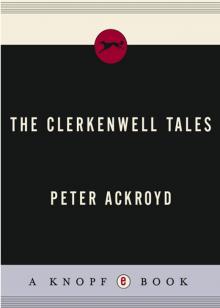 The Clerkenwell Tales
The Clerkenwell Tales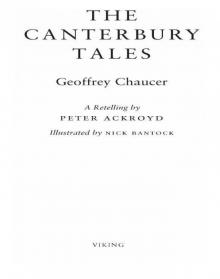 The Canterbury Tales
The Canterbury Tales J. M. W. Turner
J. M. W. Turner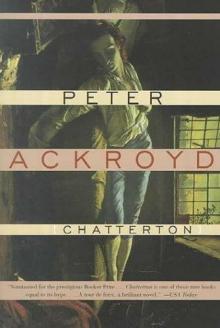 Chatterton
Chatterton The Canterbury Tales – A Retelling
The Canterbury Tales – A Retelling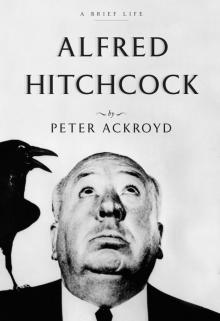 Alfred Hitchcock
Alfred Hitchcock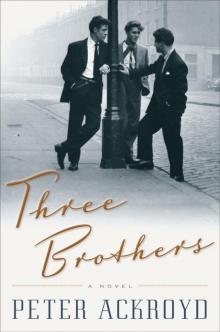 Three Brothers
Three Brothers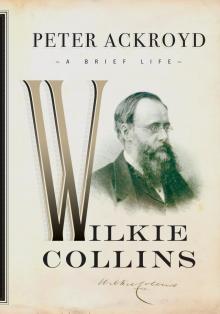 Wilkie Collins
Wilkie Collins Venice
Venice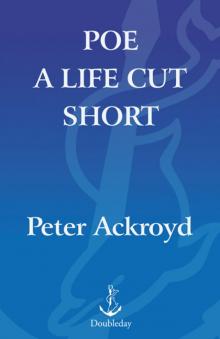 Poe
Poe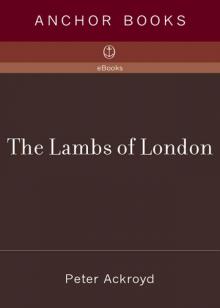 The Lambs of London
The Lambs of London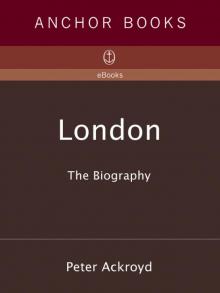 London
London Queer City
Queer City Revolution, a History of England, Volume 4
Revolution, a History of England, Volume 4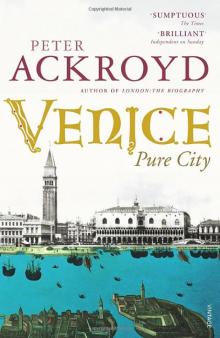 Venice: Pure City
Venice: Pure City Foundation
Foundation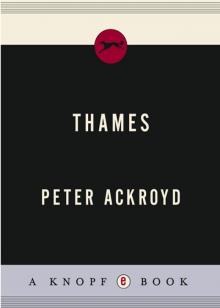 Thames
Thames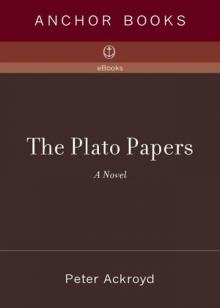 The Plato Papers
The Plato Papers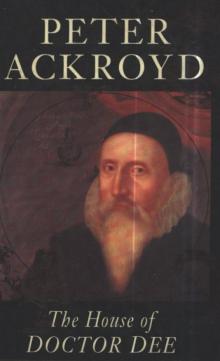 The house of Doctor Dee
The house of Doctor Dee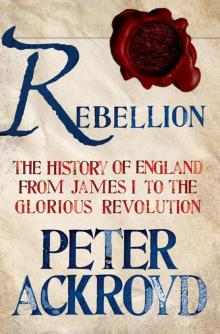 Rebellion: The History of England from James I to the Glorious Revolution
Rebellion: The History of England from James I to the Glorious Revolution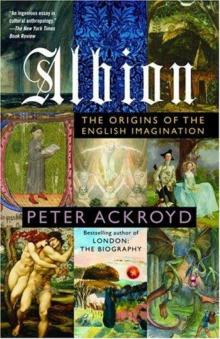 Albion: The Origins of the English Imagination
Albion: The Origins of the English Imagination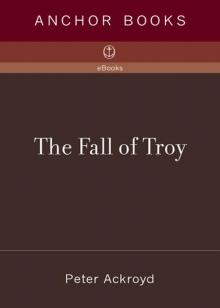 The Fall of Troy
The Fall of Troy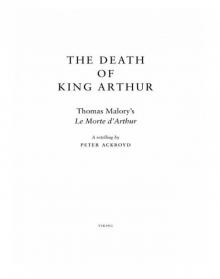 The Death of King Arthur
The Death of King Arthur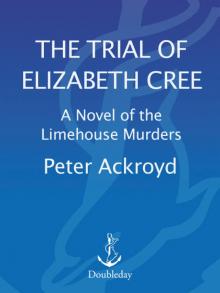 The Trial of Elizabeth Cree
The Trial of Elizabeth Cree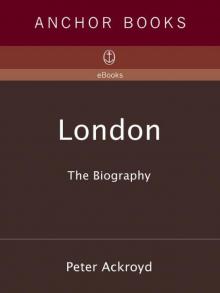 London: The Biography
London: The Biography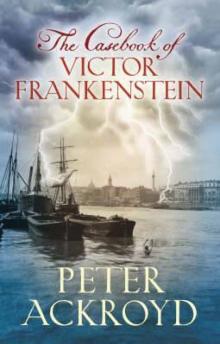 The Casebook of Victor Frankenstein
The Casebook of Victor Frankenstein Hawksmoor
Hawksmoor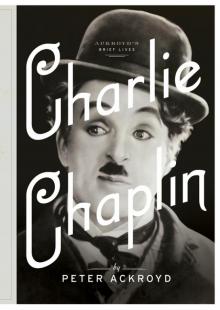 Charlie Chaplin
Charlie Chaplin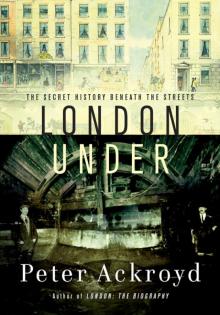 London Under
London Under